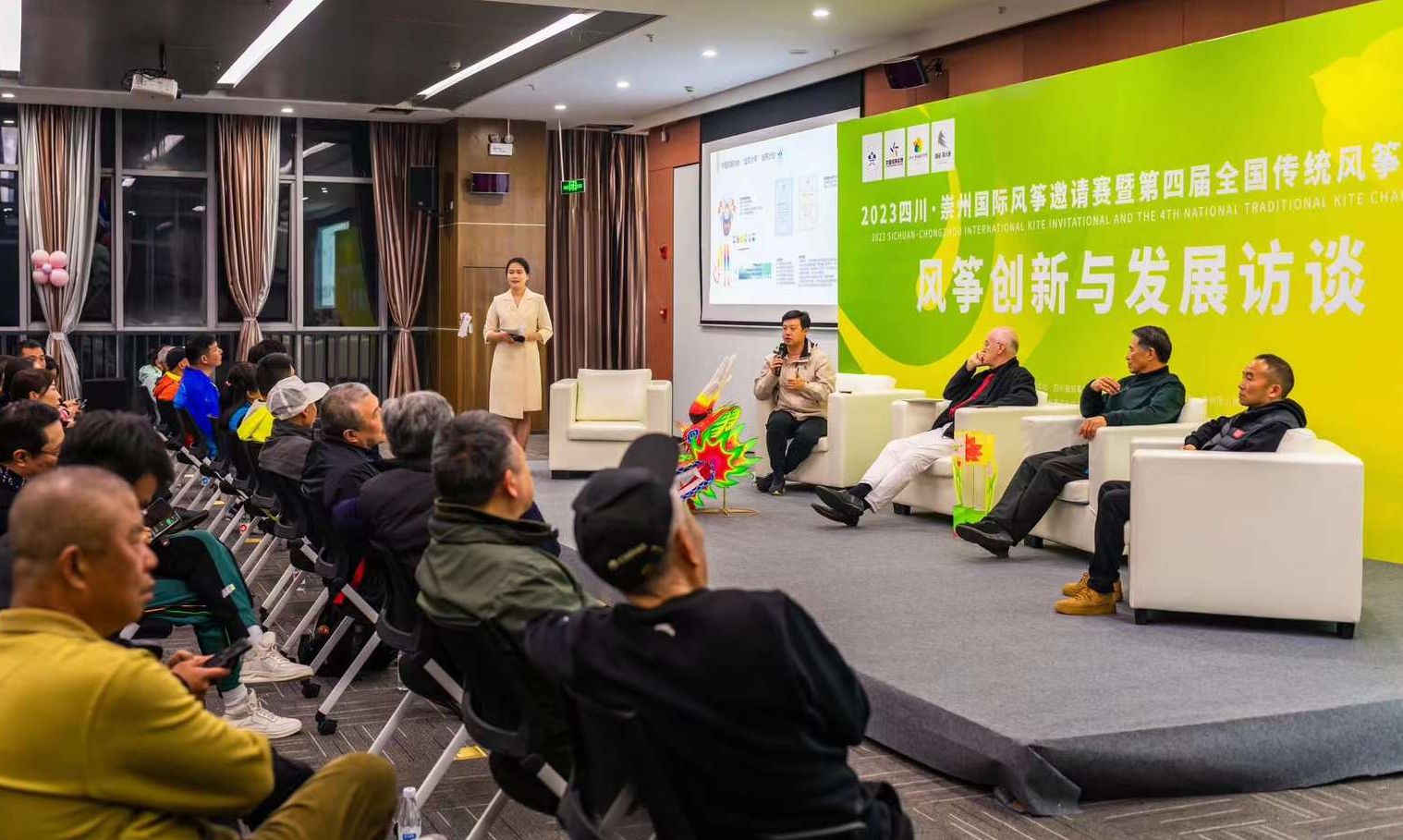 |
| Discussing
the Future of Kiteflying in the Forum |
 |
| Discussing
the Future of Kiteflying in the Forum |
第一场
First Symposium
交流主题一:
游戏,对孩子意味着什么?
For children, playing games is to practice for
future social requirements.
It's so easy to reduce the topic! Clear and simple answers to
this question during an scientific educational symposium can
only be perceived as a kind of provocation. But provocations
encourage the discussion of the relevant topic. Relax.
I understand myself as an "adult child". My interest is "kite
flying" and everything related to it. In some parts of the
world, kite flying is only acceptable for children. Adults who
are concerned with this topic are considered to be "playful"
or have not yet "grown up". I know that playing games, and of
course kite flying, belongs to the cultural heritage. Here in
China, kite flying enjoys a high esteem. I am profiting from
this attitude.
As an "adult child", my interests are somewhat different than
described above for small children. From the pleasure of
dealing with kite and kite flying, I obtain a part of my self
conception, self image and self esteem. I therefore would like
other people to deal with this issue as well. How can I
accomplish to hand over my passion for kite flying?
Thus I ask the question:
What is the Future of
KiteFlying
放 风筝 的 未 来
Future is not conservation of the ashes, but passing the fire
Abstract:
Nevertheless kite building and kite-flying is a relaxing hobby
and
pastime. But what is the
Future of
Kite-flying? This depends: have a look at
me and
you. We are at best "Today", but Tomorrow we definitely will be
"Best
Before". Future is always the next generation to come. And
future
is not only conservation of the ashes, but passing the fire.
Thus the
vital question is, how to make kite-flying more attractive to
the
younger generation?
But the future of kite-flying ist not only the
future of
relaxing
hobbies, or pastimes of younger generations. Future is
also
developing kites for technical purposes. Seriously developing modern
aspects
of kite-flying. will attract media, will attract the
more agile
parts of our societies, and as a spillover effect, will in the
end even
drag attention to the more contemplative viewpoints of
kite-flying.
摘要:
尽管制作风筝和放风筝是一种放轻型的业余爱好和消遣,然而,放风筝活动的未来是怎样的呢?
这取决于多种因素。审视一下你我:我们如今正如日中天,但明天我们终将“退居二线“。未来总是属于继往开来的下一代。传统不是格守余灰,而是传递火种。因此,至关重要的问题是,我们如何能使
放风筝这一活动对年轻一代更具吸引力?放风筝的未来不仅仅关系到年
轻一代的悠闲业余爱好和消遣,未来还与风筝的技术开发息息相关。
实现放风筝的现代化将吸引媒体的注意力,吸引社会更具活力的部分,甚至同
时还可使大众关注放风筝更深沉的观点。
Kite
first appeared in the wars of the Chinese Spring and Autumn
Period,
some 2500 years ago. One ancient book
noted, that the master
carpenter
LuBan
invented
kites
that were flown high to spy on the situation of the enemy.
There is a Monument
of LuBan in
front of the Worlds Largest Kitemuseum in WeiFang,
ShanDong Province, China. LuBan is the Patron of Carpenters,
Architects
and other kinds of professionals. There are even Daoist LuBan
temples
in BeiJing, TianJin
(under reconstruction in
2010-11), HongKong ,
Macao, and elsewhere, commemorating him.
Kite
is mainly, but not only, a plaything.
It
has
contributed
to
science
and
production.
The
first
planes
were
shaped to resemble birds of prey. This is why the English name
for this
device is "kite". In 1782, Benjamin Franklin, a noted American
scientist and statesman, studied lightning
and thunder in the sky with the help of a kite and then
invented
the lightning rod. On November 12th in 1894, Lawrence Hargrave
was
lifted
from the ground by a train of four of his "cellular
kites"
.
Hargrave was doing his utmost, to invent the plane! On November
7th
1903, Samuel Franklin Cody actually crossed the English Channel
on a
vessel towed by kites. In the late 19th and early 20th
centuries,
kites were used for lifting military observers to heights from
which
they could observe the disposition of enemy forces. And to give
them
a stable lift, even if there is no wind, there were even
kite-balloons
as we already have seen.
During World War II,
kites were also used as gunnery
targets.
French military kites have long been popular with kite fliers.
Their
lifting power and stability make them ideal for high altitude
flying
or just carrying
goods. Even today. Using a kite for lifting
persons, is done for centuries. You may even find it
today, But for
security reasons, this is not always recommended.
Another technical means of using a kite, is just to use it for lifting an antenna. Marconi used it for the worldwide first transatlantic wireless communications transmission between Ireland and Canadian Nova Scotia.
Nevertheless
kite building and kiteflying is a relaxing hobby and pastime. But what is the Future of
Kiteflying?
This depends:
have a look at me and you. We are at
best "Today", but tomorrow we definitely will be "Best Before".
Future is always the next
generation to come. And future is not only conservation of
the
ashes,
but passing the fire. Thus the vital question is, how to make
kiteflying more attractive to the younger generation?
What about using a
kite as a motor to drag you fast speed
over the
ground. One of the best
places on earth for kite
buggying
is the island of Fanoe in Danmark.
Have
a
look
at
a
kitesurfer
at
the
north sea resort of Fanoe Island, Danmark. But
you
might
also
use
a
kite
for skiing or to drag you and your sled
to the South pole and back again.
But the future of
kiteflying ist not only the future of
relaxing hobbies or pastimes
of
younger generations.
Future is also developing kites for technical purposes.
Just have a look at this energy conservig means of driving
a ship.
HighTec
at its best. This
is
future, and its todays reality.
And ofcourse have
a
look
for
your
neighbour,
beware
of
entangling. Happy
kiting
to all of you from me.
Hans P. Boehme
2011-04